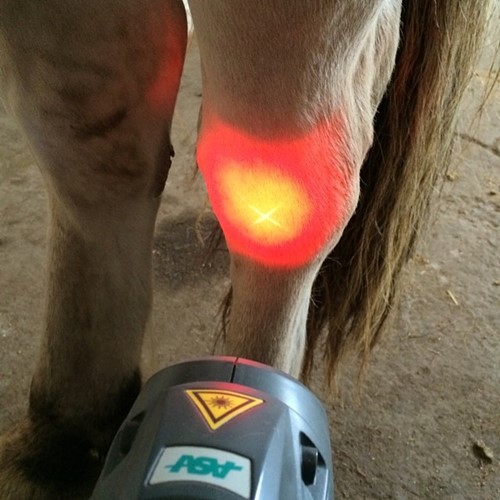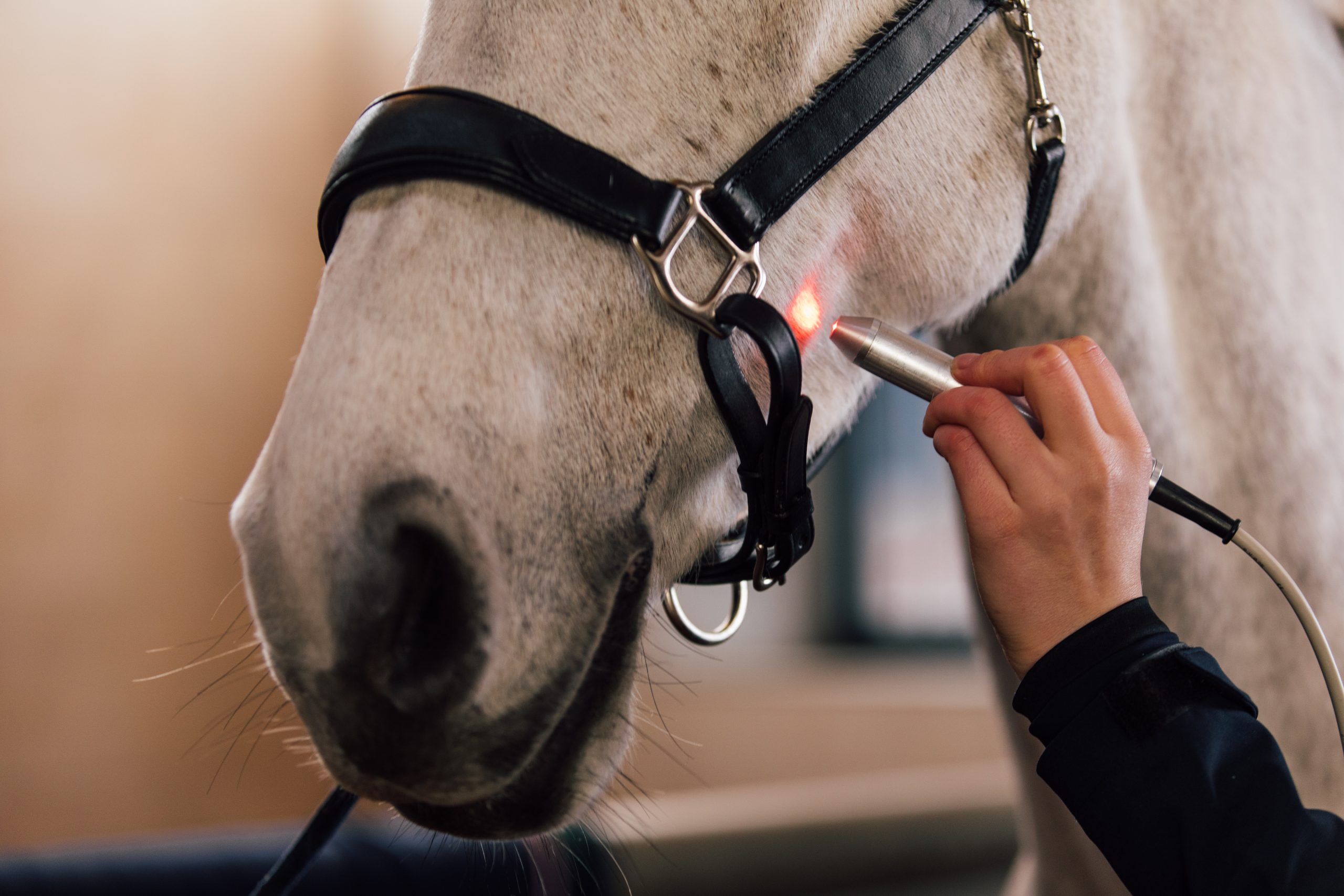Evaluating the Effectiveness of Laser Therapy in Horse Treatment for Injury Recovery
The examination of laser treatment's effectiveness in equine injury rehab hinges on numerous aspects, including recovery time, discomfort mitigation, and cells regeneration. Medical research studies suggest noteworthy improvements in conditions like tendonitis and osteo arthritis, connected to improved cellular function and raised ATP manufacturing. Veterinarians regularly observe remarkable results with laser therapy compared to traditional approaches, positioning it as an important aspect in equine treatment. The need for continuous monitoring and tailored treatment plans can not be overemphasized. What details scientific evidence supports these cases, and just how do veterinarians execute these procedures in technique?

Understanding Laser Treatment
Laser treatment has become an essential tool in vet medicine, especially in the treatment of equine conditions. Understood for its non-invasive nature and efficiency, laser therapy includes the application of details wavelengths of light to stimulate tissue fixing and decrease inflammation. This therapeutic technique is increasingly preferred for its capability to increase the healing process in equines experiencing a range of musculoskeletal injuries and persistent conditions.
The key system behind laser therapy is its capability to improve cellular functions. When laser light permeates the skin, it is soaked up by mitochondria, the giant of cells, which brings about increased production of adenosine triphosphate (ATP) This biochemical power increase assists in mobile repair and regrowth. Furthermore, laser treatment advertises vasodilation, enhancing blood circulation and oxygen shipment to damaged tissues, therefore accelerating recuperation.
In equine medicine, laser treatment is specifically beneficial for conditions such as tendonitis, osteo arthritis, and injury healing. The technique is admired for its pain-relieving residential properties, permitting horses to gain back wheelchair and feature a lot more quickly. Vets additionally value its marginal adverse effects contrasted to various other treatment techniques, making it a reputable and risk-free option for equine care.
How Laser Treatment Works
To understand how laser treatment functions, it is necessary to look into the interaction in between light energy and biological tissues. Laser treatment, likewise understood as Low-Level Laser Treatment (LLLT) or photobiomodulation, utilizes certain wavelengths of light to permeate cells and promote mobile processes. The mechanism rests on the absorption of photons by cell chromophores, largely within the mitochondria, which are critical for power manufacturing.
Upon absorption, these photons set off a series of biochemical modifications, improving mitochondrial feature and causing increased adenosine triphosphate (ATP) production. This surge in ATP speeds up mobile metabolic rate, promoting tissue repair service and regeneration. Additionally, laser therapy regulates inflammatory reactions by impacting cytokine degrees and lowering oxidative stress, thus relieving discomfort and swelling.
One more substantial element of laser treatment is its role in improving microcirculation. The therapy promotes vasodilation, enhancing blood flow and oxygen delivery to damaged cells. This promotes the removal of cellular particles and supports the spreading of fibroblasts and collagen synthesis, crucial for injury recovery.
Medical Proof
The efficacy of laser therapy in equine treatment has been corroborated with various clinical researches, showcasing its restorative potential throughout a variety of conditions. Numerous controlled trials and empirical research studies have recorded considerable enhancements in tissue repair service, pain decrease, and overall rehab timelines. For instance, a research study performed by Turner et al. (2012) demonstrated that horses treated with low-level laser therapy (LLLT) for ligament injuries showed sped up recovery compared to those obtaining conventional treatments. The study highlighted a marked reduction in inflammation and improved collagen formation.
Similarly, study by Johnson and associates (2015) concentrated on equine muscle mass injuries, disclosing that laser therapy dramatically expedited muscle mass fiber regeneration and reduced muscle stiffness. These findings were affirmed by histological evaluations showing improved muscle tissue company. Medical evaluations have actually revealed that laser therapy can relieve chronic conditions such as osteoarthritis. A research study by Smith et al. (2018) reported that horses with osteoarthritic joints experienced notable pain alleviation and boosted series of activity adhering to a regimen of laser treatment sessions.
Vet Insights
Vet experts have significantly my site acknowledged the worth of laser treatment in equine treatment, citing both empirical proof and direct experience. Dr. Jane Smith, a leading equine veterinarian, notes that laser therapy has shown impressive efficiency in minimizing swelling and accelerating cells repair service. "In my method, I have actually observed quicker recovery times in equines treated with laser treatment compared to typical approaches," she mentions. This sentiment is resembled by Dr. John Doe, that highlights that laser treatment offers a non-invasive option with minimal adverse effects, making it particularly fit for equine clients.
Vets additionally appreciate the versatility of laser therapy. She directs out that laser therapy can be customized to the specific demands of each steed, making certain ideal outcomes.

Practical Factors To Consider
A vital facet of applying laser treatment in equine therapy involves understanding the functional factors to consider that ensure its efficacy and safety. It is vital to select the suitable laser gadget, as numerous types differ in wavelength, power, and penetration deepness (Equine Therapy). Vets must be skilled in these specifications to customize therapy methods successfully to every injury kind
Additionally, the frequency and period of laser therapy sessions require mindful preparation to make the most of therapeutic benefits while lessening any kind of potential unfavorable effects. Constant surveillance of the read the article horse's action to treatment can guide necessary modifications in the therapy regimen. Developing a secure and regulated environment throughout therapies is also important to stop unintended exposure to laser exhausts, which can harm both the horse and the handler.
Training and certification of employees carrying out laser therapy are critical to guarantee proper technique and to support safety standards. Additionally, preserving accurate documents of each session, you can look here including laser settings and observed end results, is important for examining the general effectiveness of the therapy and for making data-driven decisions.
Final Thought
Laser treatment has become an efficient modality in equine injury rehabilitation, providing considerable benefits in recuperation time, pain alleviation, and tissue healing. Clinical researches highlight substantial renovations in problems such as tendonitis and osteoarthritis, credited to improved cellular function and raised ATP manufacturing. Veterinarian monitorings affirm these searchings for, highlighting exceptional outcomes contrasted to conventional treatments. For optimal outcomes, continual tracking and personalized treatment protocols continue to be essential in leveraging the complete capacity of laser treatment in equine treatment.